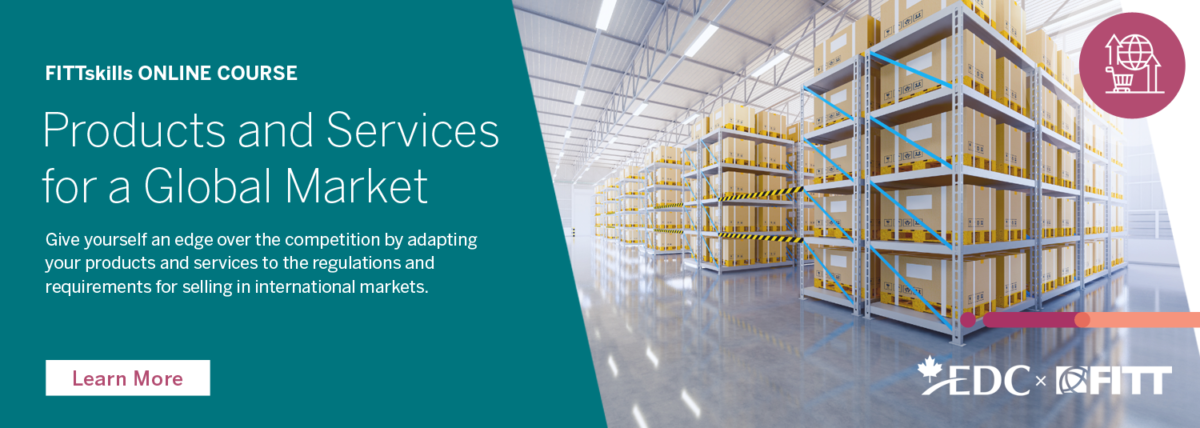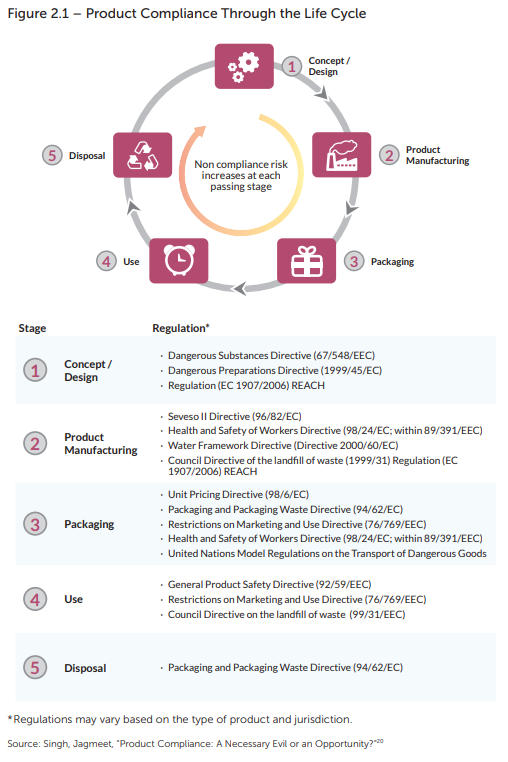
Product compliance is a constantly evolving process. Because laws, standards and regulation continuously change, manufacturers, retailers and suppliers are pressed to innovate quickly in order to create compliant products and substances. Whether an organization manufactures the product or resells it, the responsibility to comply makes the manufacturer, suppliers and the reseller legally accountable.
The role of product compliance increases in scenarios of product proliferation, complex supply chains and multiple markets. With a recent increase in compliance-related penalties, fines and recalls, there is no room for non-compliance. The challenge for your company lies not only in producing a compliant product, but also in declaring it as compliant by placing it on store shelves.
Legal issues and risks—particularly product liability—are increased by production activities in multiple foreign markets, off-shore manufacturing and off-shore contracts. Some of these legal risks can be mitigated through regulatory compliance and meeting product standards.
What is Product Compliance?
In the simplest terms, product compliance means adhering to all the regulatory requirements and standards that products and services need to meet to be lawfully marketed in a given jurisdiction. These requirements vary depending on the product and the market, covering areas such as electrical safety, chemical composition, and children’s safety, to name a few. Compliance can be a complex area with multiple laws and regulations for suppliers and buyers to consider. Regulatory authorities ensure that products and substances are in compliance and can authorize regulatory approval.
It’s important as a manufacturer or distributor to have a comprehensive understanding of the different aspects of product compliance to avoid costly mistakes. Since different laws regulate various aspects of products, manufacturers need to understand not just one regulation, but possibly multiple regulations to bring their products to market in a compliant way.
Want to learn more about regulatory compliance and getting your products ready for global markets? Check out the FITTskills Products & Services for a Global Market online course.
Regulatory Compliance
Manufacturing compliance is comprised of technical, legal and corporate requirements, as well as regulations and practices manufacturers must comply with in order to produce and market products.
The risk of non-compliance has become an increasingly major concern in recent years, particularly for manufacturers with operations in multiple countries and jurisdictions that have their own compliance requirements.
This development has been further heightened by the increasing role of governmental regulatory bodies in certain industry sectors, along with the emergence of global standards to address the increasingly global nature of manufacturing. Regulatory compliance can impact every stage of the manufacturing process from product design to the end product.
Product Safety Compliance
Product safety compliance requires products to conform to regulations that ensure the product does not harm consumers, property or the environment throughout the product life cycle from inception to disposal. Regulations govern product concept/design, manufacturing, labelling, packaging, use and disposal (see Figure 2 1)
Safety regulations can cover the characteristics of a product, as well as its technical specifications, safety features, functionality, quality and durability. Product safety regulations may also apply to production processes, such as the way in which a product is manufactured. These regulations can also apply to the product life cycle, including how returns and disposals are managed, illustrated below.

Each company must research the regulations that apply to its products within its target markets, and ensure that its products, production processes and packaging comply with those requirements.
Many industries also have voluntary industry standards and best practices for packaging that often exceed regulatory expectations to reassure consumers and the general public with respect to the safety and integrity of that industry.






Honourable, Your Guidance for Export and Import Business is very informative. I appreciate your Guidance for Exporters and Importers is Praiseworthy . The Concerned persons should consider you guidance before sending the consignments by Air Cargo and Shipping by Sea. This action will not be delayed by Custom and other Authorities.
With best regards and wishes for your good health and prosperity. Your Sincerely Shafique Ahmed Agriculturist.